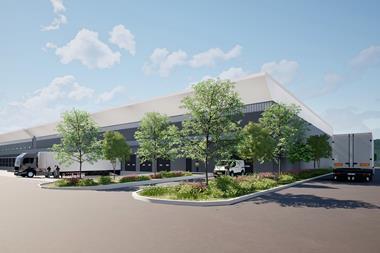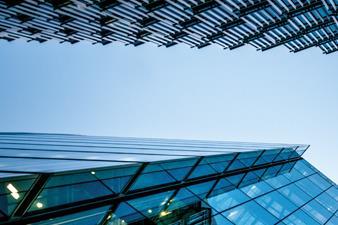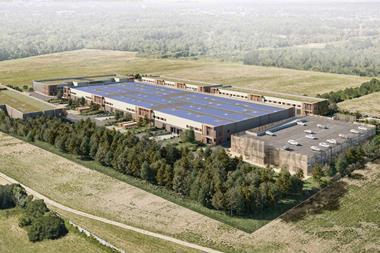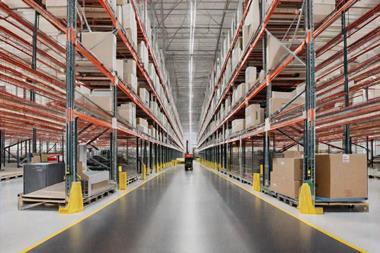Logistics is increasingly becoming a strategic source of competitive advantage with the increase in the global outsourcing of production, shortening of product life cycles and intensification of global competition.
In this highly competitive business environment, the quality of logistics has assumed greater significance, influencing a company's decisions on matters such as location, which suppliers to buy from or which consumer markets to enter. Essentially, high logistics costs coupled with low levels of service are barriers to trade and foreign direct investment (FDI) and, thus, to economic growth.
Importance of manufacturing for India
While the service sector is widely credited with the growth of the Indian economy, manufacturing is also playing a key role in the 9% GDP growth (see table 1). In the last three years, manufacturing in India has taken off: while it grew at 6% during the period 2000-04, the pace accelerated to 10% during the period 2004-07. In this time period, it has grown faster than GDP and has marginally increased its contribution to Indian GDP. It also plays an important role in attracting FDI and generating exports. In 2006-07, it attracted almost half of the FDI and contributed 40% to the total exports.
The Special Economic Zones (SEZ)
With a view to overcome the shortcomings experienced on account of the multiplicity of controls and clearances; absence of world-class infrastructure, and an unstable fiscal regime and to attract larger foreign investments to India, the Special Economic Zones (SEZs) Policy was announced in April 2000.
The main objectives of the SEZ policy are (see table 2):
India's logistics performance - a global comparison
A recent report by the World Bank on trade logistics compared global economies on seven different logistics parameters, such as customs procedures, logistics costs (such as freight rates) and infrastructure quality to new areas like the ability to track and trace shipments, timeliness in reaching a destination and the competence of the domestic logistics industry (see table 3). Singapore ranked first on the Logistics Performance Index (LPI) followed by the Netherlands, Germany, Sweden and Austria.
It also revealed that though all developed countries figure at the top of the list, there are significant differences among developing countries with similar income levels. For example, China performed better than oil producing countries such as Bahrain, Saudi Arabia, Kuwait, or Qatar where the performance has not compared with other high-income countries due to the relative absence of incentives and pressure from the private sector to implement institutional reforms for trade and transport.
India ranks first among low income group countries on LPI, though it is way behind China or South Africa.
Currently logistics cost in India is about 13% of GDP and the break-up of logistics cost is as shown in the figure 2a.
Current infrastructure
On the face of it, India has one of the most extensive physical infrastructures in the world, whether in terms of roads, seaports or airports. India's world ranking is pretty impressive in roadways and railways. According to CIA's world fact book, India has the world's third biggest road network after the US and EU and 5th biggest rail network. Only the US, EU, Russia and China have bigger rail networks than India. By the end of the financial year 2005, India had 3.4m km of roads.
Road and rail networks in India
It is clear that India's rail and road infrastructure compares favourably with that of similarly placed developing countries such as China and Brazil, though it looks inadequate compared with developed countries in the EU and North America.
However, one area where India's infrastructure is inadequate is that of civil aviation. According to the CIA's ranking, India is 20th on the world list of countries with the maximum number of airports. The US tops the list with 35 times as many airports as India. Even smaller countries such as Mexico and Bolivia have more airports than India.
India is also one of the world's leading maritime nations with 7,500km of coastline (including Andaman & Nicobar islands), with 11 major and 187 minor ports. While major ports are under the central government jurisdiction and are managed by respective port trusts, minor ports are under the jurisdiction of the respective state governments. The major ports carry about three-quarters of the total traffic.
Table 4 gives a snapshot view of the various modes of transport in India. Railways continue to be dogged by underinvestment: in the 49 years since independence, the country added only 9,200km to its railway network. In the same period, the road network grew more than sevenfold.
Growth in rail freight traffic has been declining steadily since independence, though it showed some growth revival during 1995-96 to 1999-2000. In contrast, the rate of growth of road freight (based on the number of goods vehicles) has increased during the same period. In fact, the growth in the cargo carried on roads has been faster than the growth in vehicles since the payload of trucks has grown steadily over the years.
According to the Planning Commission, about 800bn tonne km of freight and 2.3trn passenger km was handled by the transport system during 2002, with the total transport demand having grown at around 10% per year over the previous 10 years. The modal growth rates have varied with road transport and air services growing at a much higher rate than the railways.
Logistics Sector for 2007-08
Growth Drivers
Economic growth: GDP growth of 9% appears well within reach for the next several quarters at least, driven by global demand for Indian-made goods as well as internal demand.
Investments: New plants/facilities by multinationals across India (business process outsourcing, automotive, steel, clothing, electronics and telecoms) will start up in 2008, and this will increase demand for logistics for movement of materials, manpower and money. Investment in ground facilities will also require logistics services. This demand can be met profitably; in fact, global service providers are already showing significant interest.
Retail: Reliance, Wal-Mart, Tesco, Bharti and Carrefour made the headlines in India in 2006, adding to the major players already present - Pantaloon, Metro, Shoppers Stop, Trent. Retail is an absolute supply chain game: front ends are easy to make and maintain but the task of filling the shelves 24 x 7 all year round with the right quantity and type of merchandise with long and flexible supply chains is not. ETIG's survey suggests that the present capacity in India is just catering to the Indian retail chains and meeting the huge demands of giants like Reliance and Wal-Mart may be beyond the present capability levels. Nevertheless, retail remains a key driver for the growth of logistics in India.
Special zones: In the rush to cut costs and take advantage of tax-free havens across India, almost every major company, from auto to steel, to FMCG to durables, has now set up plants in the far north like Himachal and Uttranchal, even though key markets are in the west, south or lower north. That means longer lead times, more transportation, more costs: and that in turn means more innovative solutions for logistics. The number of SEZs and special zones is set to rise in the near future.
Challenges
Finance: Interest rates are already edging up, which will eventually dampen the rush for goods and capital expenditure. However, this dampening may not be as severe as in the past when rates were raised because the current pool of disposable income coupled with booming demand from overseas is reducing the impact of interest rate movements on financing.
Infrastructure bottleneck: Considering the rate at which India is becoming a major hub for production of goods and services, it will be ironic if demand cannot be serviced: in fact, most economists feel a lot more demand can be captured if there are incremental improvements in connectivity of all kinds.
Policy: There is a lot of FDI waiting in the wings but a policy change in this area is still questionable. The move by India Post to restrict FDI in courier services to below 49% and to retain a monopoly of letters/packages up to 300g may lead to chaos, service overload for post and possibly withholding of investments by global major companies.
Manpower crunch: While companies can operate with staff pulled from various functions like stores or warehouse or dispatch, this is limited beyond a certain scale and complexity. Trained manpower is important as it gives the customer a better sense of control and command. However, manpower of the quality and quantity desired is in short supply. While colleges are ramping up, it will be some years before we see the development of a cadre of trained personnel who look at logistics as a science and skill rather than just in terms of operations.
The outlook for the future
The BRIC report by Goldman Sachs states that the Indian economy will grow from US$718bn (€487bn) in 2007 to US$27,803bn by 2050 (at 2003 prices). Logistics contributes about 5% of the manufacturing cost.
By applying these percentages, the logistics industry market potential is estimated to be set to grow from US$17.5bn in 2007 to US$681bn in 2050. With warehousing contributing about 9% of the total logistics cost, total expenses towards warehousing is estimated at US$1.6bn in 2007 and US$61bn in 2050. Treating this as a recurring expenditure and capitalising the same at 12% returns and assuming a developer's profit margin of 30%, the total cumulative investment in warehousing real estate is estimated at US$10.25bn in 2007 increasing to US$391bn by 2050. This presents tremendous opportunities for the future growth of the real estate sector in India.
Nirav Kothary is vice-president, consulting and land agency (East), Jones Lang LaSalle Meghraj Property Consultants












